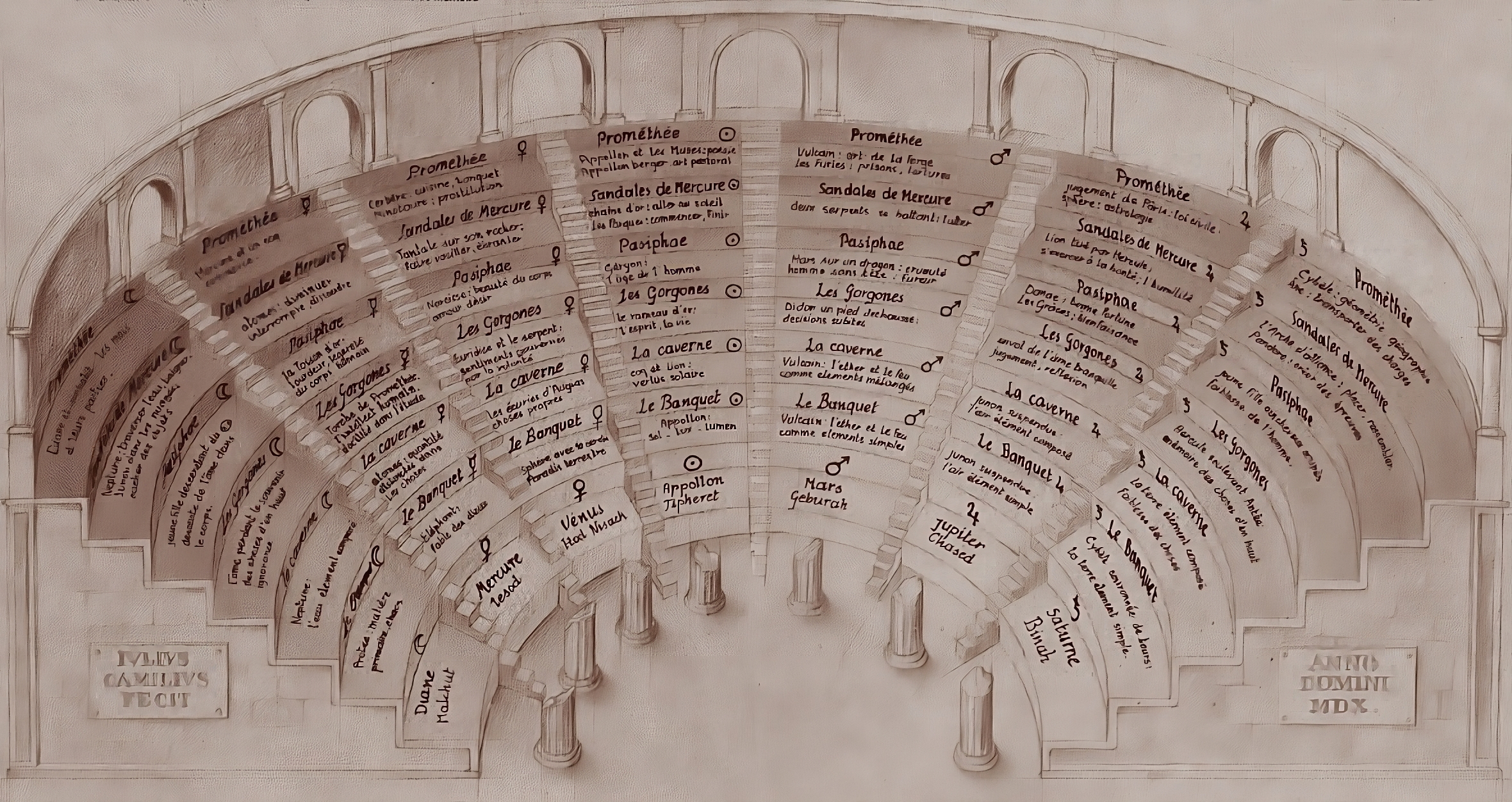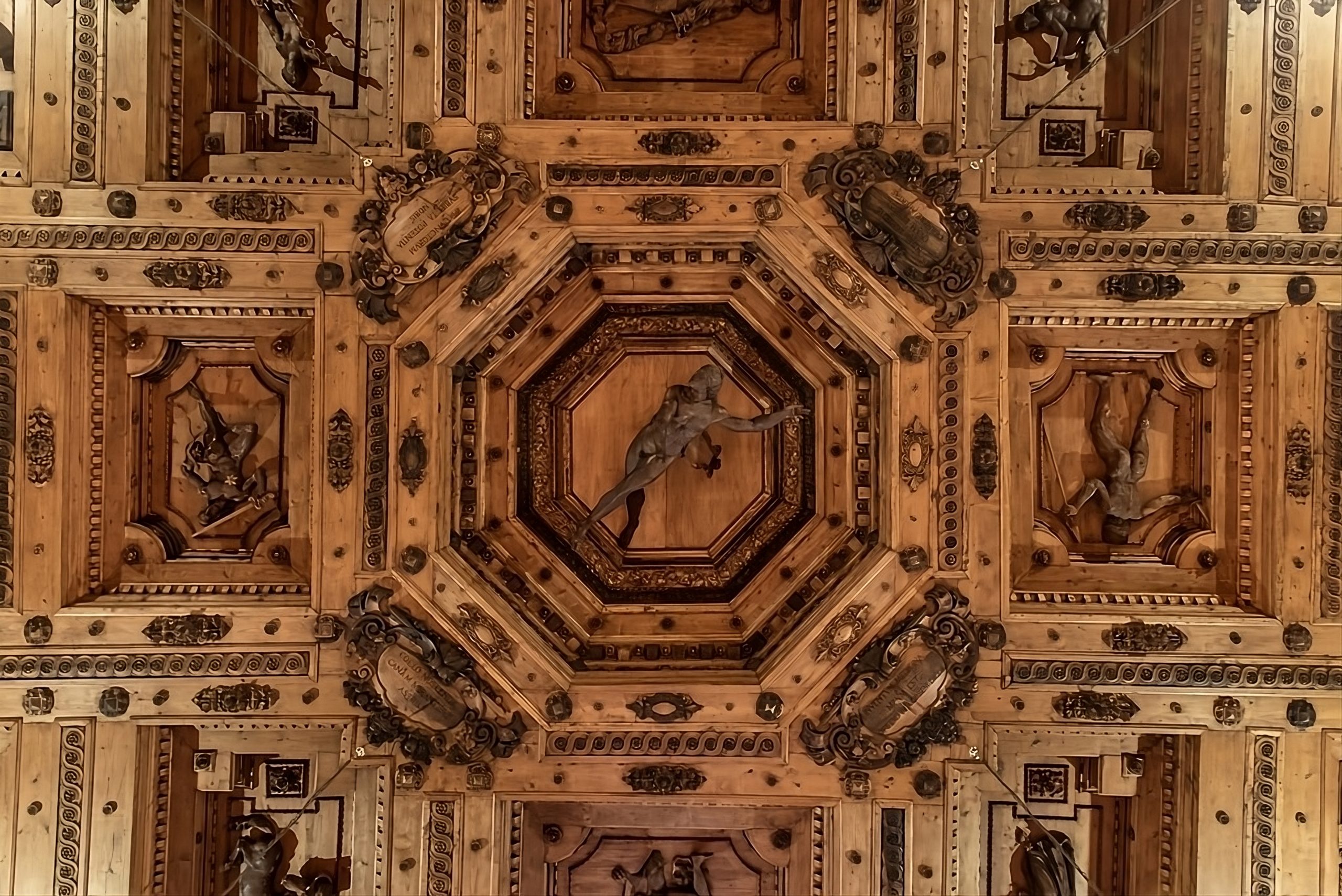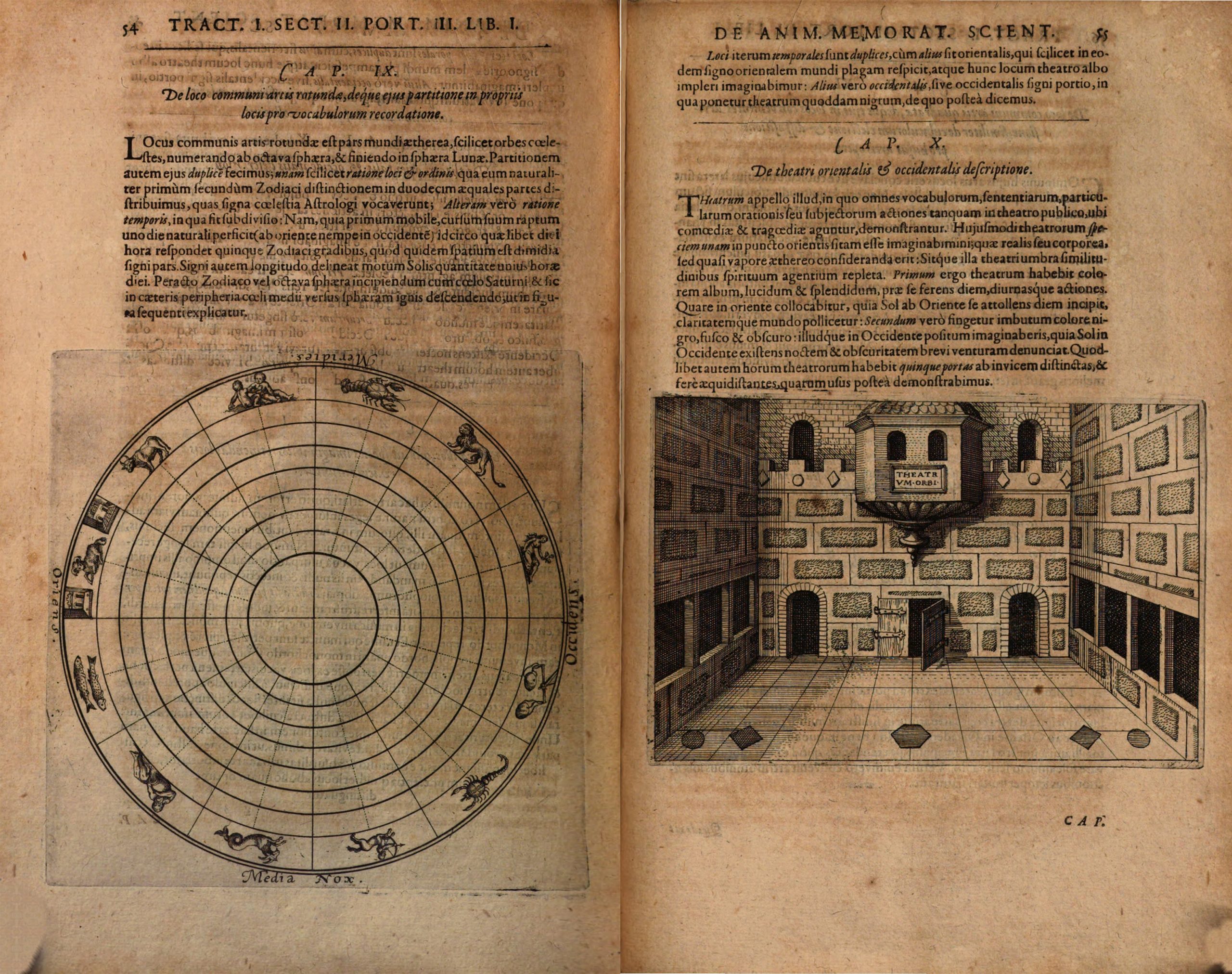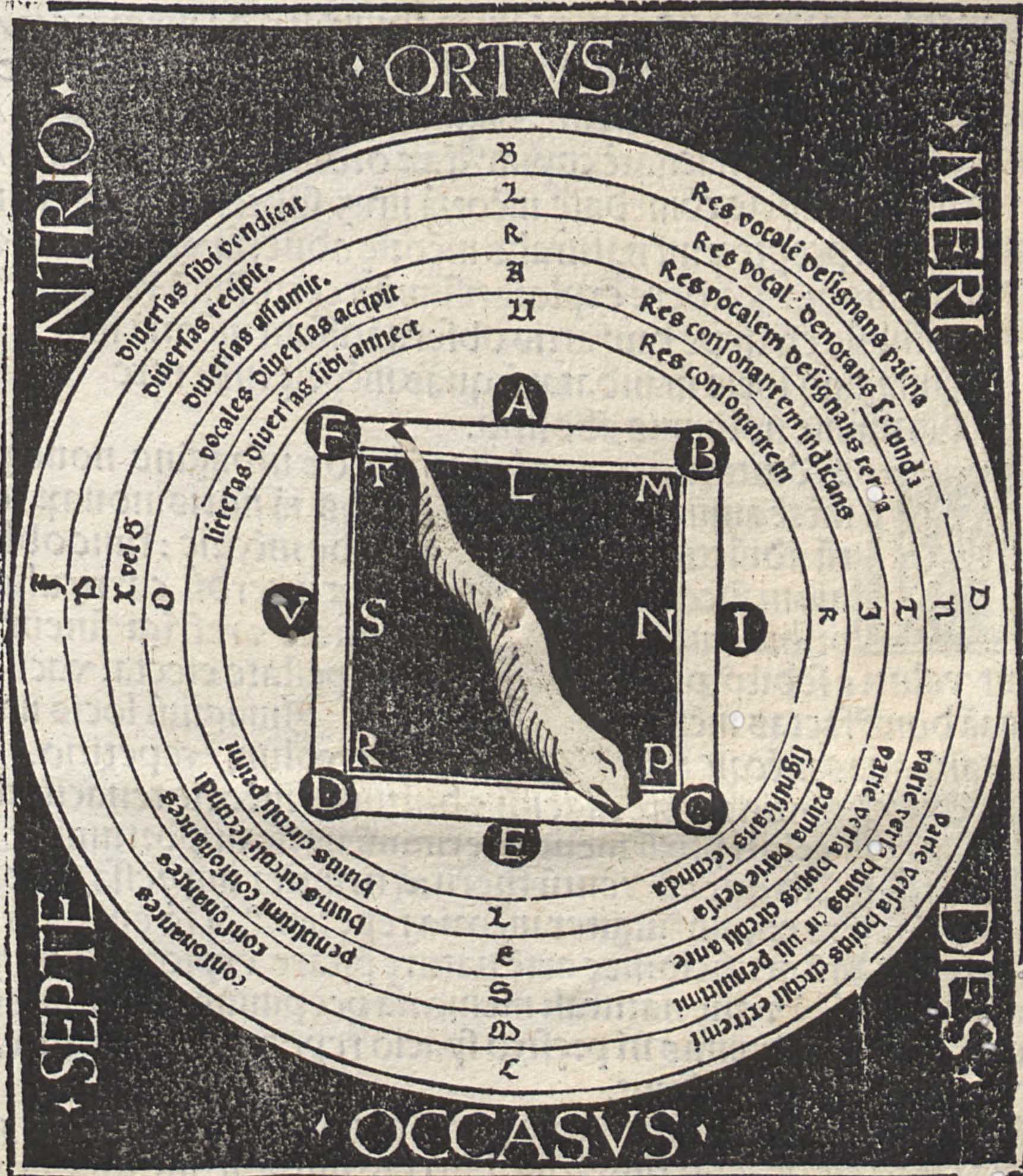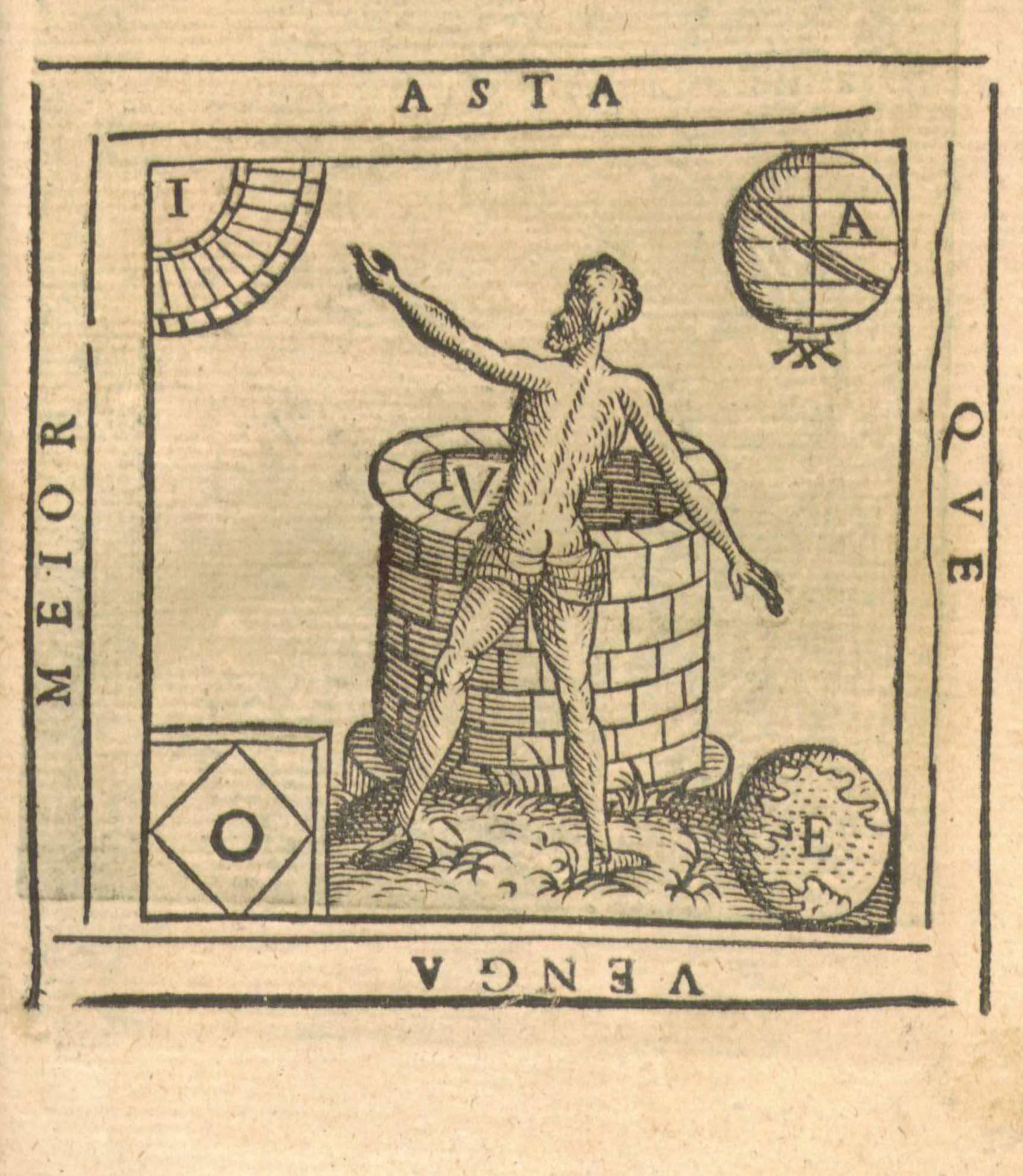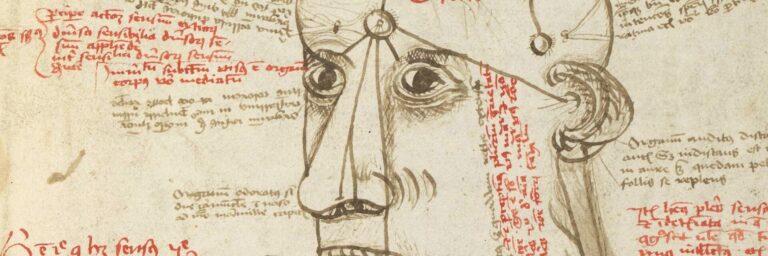Body, World and Theater
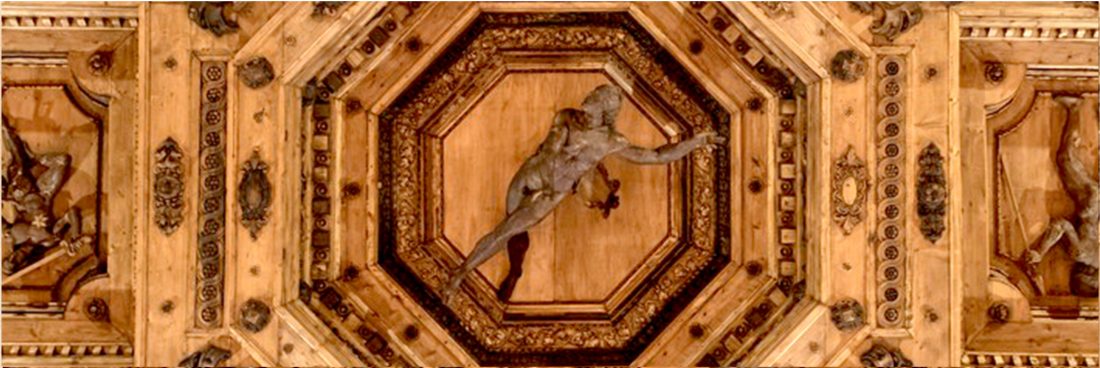

FORMA FLUENS
Histories of the Microcosm
Body, World, and Theater
Contaminations between Hermetical and Anatomical Traditions in the Renaissance
Tommaso Ghezzani
Normale University of Pisa
University of Geneva
Santorio Fellow

Camillo, a multifaceted individual, embodied various roles – from rhetorician and philosopher to kabbalist, magician, and alchemist. His worldview and understanding of humanity align harmoniously with the Renaissance Platonic tradition. However, he offered a unique reinterpretation, drawing inspiration from the legendary Hermes Trismegistus and the Jewish Kabbalah, as conveyed through the teachings of Marsilio Ficino (1433-1499) and Giovanni Pico della Mirandola (1463-1494). [1]
Camillo’s crowning achievement was the creation of the pansophical model, a monumental mnemonic-sapiential apparatus designed to encompass all facets of universal knowledge within a theatrical framework. This innovation was seamlessly integrated into the broader cultural transformations of the era, notably the burgeoning field of anatomical studies. The Theatre of Camillo bore a profound connection to the anatomical revolution, and conversely, anatomy, along with its tangible instruments, benefited from Camillo’s intellectual milieu and enduring influence. Examining this remarkable intersection between the Platonic-Hermetic tradition and the scientific-anatomical tradition, both united by the concept of the theater, reveals that the distinct cultural paradigms of the Renaissance were far more interconnected than previously believed, despite their apparent disparities.
Examining this distinctive connection between the Platonic-Hermetic tradition and the scientific-anatomical tradition, both converging around the symbolic stage of the theatre, serves to unveil the surprising fluidity of Renaissance cultural paradigms. Despite their apparent disparities, these paradigms demonstrated a remarkable interplay that transcended conventional boundaries, shedding light on a more interconnected tapestry of thought and innovation during the period.
Camillo’s lifelong endeavor aligned seamlessly with the prevailing ideology of numerous contemporary Venetian academies. His ambitious undertaking centered on the creation, both in the realms of thought and matter, of an expansive Theater of Memory, effectively a Theater of the World. Various attempts have been made to reconstruct this impressive mnemonic and encyclopedic apparatus, as illustrated in Figure 1.
Figure 1. Anonymous, Imaginary reconstruction of Camillo’s Theatre (17th century).
Camillo’s background as a trained rhetorician endowed him with a deep familiarity with classical and modern methods associated with the art of memory. The ancient art of memory relied on the construction of mnemonic systems, employing mental images (representative symbols of things to be remembered) meticulously placed within structured mental locales (reminiscent of tangible architectural spaces), each designed to evoke a particular order. In essence, to remember was to embark on a mental journey through these palatial constructs, each room brimming with images that served as vessels for memories.[2]
Camillo ingeniously employed this precise method to construct a mnemonic system that departed from tradition, founded instead on a universal and encyclopedic framework. His vision was for this system to not only exist within the ethereal confines of memory but to materialize in tangible form. He envisioned a compendium of images, meticulously arranged within an expansive theatrical space, possibly following a Vitruvian design. This remarkable creation was intended to be memorized in its entirety, just as it was presented, by anyone seeking to attain genuine wisdom and mastery over it.
The observer of these images did not sit in the audience, but rather occupied the stage itself, offering the ideal vantage point from which to behold the spectacle of memorable images organized in accordance with the cosmological-astrological order. This progression spanned from the intelligible, through the celestial, and down to the terrestrial realms. Behind each image, symbolizing a distinct facet of reality, were gathered the most authoritative texts on the corresponding theme. It is no coincidence that the Theater was characterized as an “artificial mind and soul” or likened to “a soul with windows.” [3] It was, in essence, a visual revelation of all conceivable concepts dwelling within the recesses of the human mind.
While the most systematic exposition of the Theater can be found in the posthumous work Idea of the Theatre (1550), it is important to note that this conceptual framework underpinned nearly all of Camillo’s writings. One particularly illuminating passage can be found in his Treatise on Imitation, penned around 1530, which sheds light on the rich interplay between various academic disciplines.
In this text, Camillo provided insights into the art of imitating exemplary literary works. He emphasized that true imitation did not involve pilfering words or rhetorical devices from the classics verbatim. Instead, he advocated for stripping away the contingent elements and delving into the underlying structure from which these elements had sprung—the logical mechanism that gave them life. In essence, he called for an anatomical dissection of exemplary texts to unearth the universal logical norms governing them.[4]
This meticulous process was likened to a genuine anatomical experiment, a practice Camillo himself had witnessed firsthand. In his own words:
I remember that in Bologna an excellent anatomist had placed a human body in a chest with many holes and then exposed it to the current of a river, which due to those holes, consumed and took away all the flesh of that body in the space of a few days, and the body then showed wonderful secrets of nature in the bones and remaining nerves. Thus made into a body, sustained by bones, I resemble the model of eloquence, by matter and design only sustained.[5]
It’s quite plausible that the enigmatic anatomist in question might have been Berengario da Carpi, or perhaps even the renowned Andreas Vesalius. Interestingly, both of them not only shared connections with Camillo through their association with the Accademia degli Infiammati but also enjoyed a close friendship with the architect Sebastiano Serlio. [6] Regardless of the anatomist’s identity, the parallel between their work and that of the literary speaker seeking to uncover the underlying structures of their literary models is striking.
Much like the anatomist had to peel away the superficial layers of the human body to comprehend its hidden and universal functions, the same principle applied to the speaker aiming to unearth the topical orders within literary works. It’s highly likely that the textual repositories concealed behind the images within the Theater followed a similar method. Consequently, the Theater encapsulated two fundamental paradigms that intricately converged: that of the macrocosm and that of the microcosm.
The architectural design of the Theater, combined with the astrological framework of celestial images, invoked a concept reminiscent of Vitruvius—an ancient notion of correspondence between the layout of the theater and the zodiacal arrangement in the celestial vault.[7] Simultaneously, the Theatre was also described as an artificial mind or soul, thus preserving the instances of the body system, which was also found within the individual anatomized texts preserved behind the images that filled the structure. As previously mentioned, the cultural context of the sixteenth century significantly influenced anatomical studies. Among the most groundbreaking developments of this era, anatomical tables and the renowned anatomical theaters held a special place, and it’s worth delving into the latter now.
Anatomical discoveries were meticulously presented in a theatrical manner, not only through the utilization of visualization strategies that were undeniably mnemonic in nature, as seen in anatomical tables, but also quite literally within the architectural structures that hosted lectures and public demonstrations. Towards the latter part of the sixteenth century, anatomical theaters began to adopt more permanent and stable designs, thereby invoking the symbolism and function of classical theater, as well as its mnemonic and macrocosmic roles. A prime example of this transformation can be witnessed in the anatomical theater of Bologna, which stands as a significant emblem of this evolution.[8]
Tommaso Ghezzani is a PhD Candidate at the Normale University of Pisa and Geneva University (Institut Éthique Histoire Humanités) as well as a didactic assistant (cultore della materia) at the Universities of Bologna and Pisa. His research focuses on the history of Renaissance philosophy, aesthetics and the history of science, at the intersection between philosophical, literary and visual cultures. He is currently working on a doctoral project on the relationship between the art of memory, the sciences and pansophy in the European Renaissance.
The anatomical theater in question, which was designed by Antonio Paolucci in 1637, boasts a particularly intriguing feature—a coffered ceiling adorned by the artistic hand of Antonio Levanti in 1645 (as depicted in Figure 2). This ceiling serves as a captivating focal point, as it portrays the allegorical representations of fourteen constellations, with the central figure being Apollo. Apollo, the guardian deity of medicine, is encircled by an array of constellations, each intimately linked to specific parts of the human body. The celestial scene overhead encompasses the lower space within the anatomical theater’s actual structural framework.
Figure 2. Central detail of Antonio Levanti’s Apollo on the ceiling of the Anatomical Theatre of Bologna (1645).
To fully appreciate the significance of this architectural detail, we must journey nearly a century beyond Camillo’s era and cross the English Channel, arriving in England. In this English context, we encounter yet another hermetic-Platonic philosopher, Robert Fludd (1574-1637). Within the second section of the second volume of his monumental pansophical opus, the Utriusque Cosmi Historia (1617-1621), which explores human knowledge and techniques, there exists a dedicated chapter on mnemotechnics. [9] Strikingly reminiscent of Camillo’s approach, Fludd’s architecture for the construction of reference memory was, once again, a theater. And just as with Camillo’s ideas, Fludd’s theater was intimately intertwined with the astrological system.
Within this mnemonic apparatus, the celestial orbits served as mnemonic loci, complemented by theatrical architectural elements. Intriguingly, Fludd even proposed the design of an Elizabethan-style theater, although its purpose extended beyond a single venue. [10] Instead, it was intended to serve as a foundation upon which one could envision the creation of more theaters, as illustrated in Figure 3.
Figure 3. Robert Fludd, Utriusque Cosmi, vol. 2-II (Frankfort, 1621), 54-55
The illustration of the astrological vault within Fludd’s work only showcased two theaters situated within the sign of Aries. However, the absence of the ceiling in the theater’s design was likely a deliberate choice. Taking inspiration from the contemporary Globe Theatre, which, like many theaters of its time, featured a celestial sphere-themed ceiling, it can be assumed that the missing ceiling design was meant to be imaginatively completed on the adjacent page. This clever layout allowed the design of the theater and that of the celestial spheres to perfectly align when closing the volume. This not only reinforced the harmonious relationship between the two systems but also offered valuable insights into the structural details of Fludd’s memory theater ceiling.
Returning to Bologna, it becomes highly significant to note the celestial ceiling above the anatomical theater, replete with astrological references. An intriguing detail of this ceiling is its pronounced dynamism, achieved through the diagonal positioning of Apollo within his octagonal coffers (as depicted in Figure 2). This positioning obstructed Apollo’s conventional circular dance, imparting a sense of progressive motion as if the god were sequentially indicating all the constellations surrounding him. While this dynamic alignment brings us closer to the circular patterns observed in Fludd’s work and in Camillo’s Theater, it also draws upon another tradition—the combinatorial wheels devised by Raymond Llull.
During this period, these combinatorial wheels had found their way into treatises on the art of memory and the contemplations of various philosophers. An example can be seen in one of the editions of Jacobus Publicius’ successful Ars memorativa (Figure 4), featuring a complex syllabic construction system composed of combinatorial wheels. The rotational dynamism of these wheels served as a mental aid for those who needed to memorize the system. A worm-like figure placed at the center was used to evoke this dynamic imagery and was attached to the page with a string, enabling it to rotate freely.
Closer still to Apollo’s representation was the imagery employed by Giordano Bruno in Articuli adversus mathematicos (1586) to illustrate various types of mnemonic places (Figure 5). In the center of this depiction stood a human figure, though this time in a fixed position. Nevertheless, the diagonal orientation of both the body and outstretched arms suggested a similar circular dynamism, even though the figure was enclosed within a square space.
Although we may not expect to establish a direct link between the theater in Bologna and all the aforementioned examples, it’s striking to observe the adoption of similar iconographic solutions across diverse disciplines and practices. These solutions appear to interconnect, constantly alluding to one another: the dynamic nature of combinatorial wheels, their visual impact, their reintegration into mnemonic systems based on the rotation of celestial spheres, and the interplay between the world, theater, and the human body.
Within the anatomical theater of Bologna, the spectator was presented not only with the gradual revelation of the inner workings of the human body but also with the ever-turning dance of Apollo and the constellations. Thus, the fabrica of the body and the fabrica of the heavens found themselves intertwined within the theatrical fabrica — a space dedicated to both education and the control of imaginative visual perception.
The potency of visual perception, closely intertwined with the aesthetic and mnemonic capabilities of the human soul, remained a fundamental tool for anatomists and certain philosophers alike. After all, wasn’t Mnemosyne, the mother of all Muses, emblematic of this enduring connection between memory and creativity, both essential aspects of comprehending the complex spectacle of the world and the human body?



